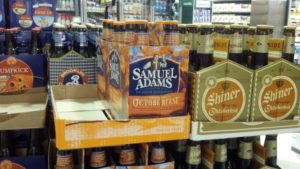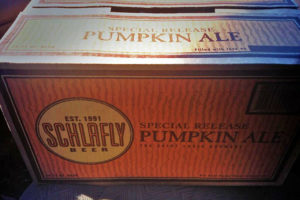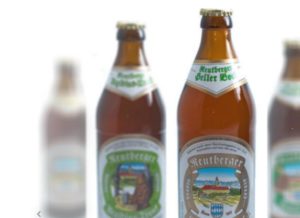
Editor’s Note: This sponsored column is written by Nick Anderson, beermonger at Arrowine (4508 Lee Highway).
About ten years ago, I took my first job in a wine store.
My role at that shop began as a stock boy — keeping the shelves clean and full, carrying boxes out to people’s cars, loading deliveries into the store. While I was relatively well-versed in beer and beer styles at the time, I knew next to nothing about wine. It was my manager who noticed in conversation that I knew a thing or two about beer and asked me if I wanted to learn about wine.
I’ve likened the next four months of my life to learning a language by immersion (pun only somewhat intended): I tasted every wine every distributor would bring by to try to sell us, taking notes on each as we went along. After closing the shop, my boss would open a ‘mystery wine’ and have us talk about what we thought of it and what we thought it might be before revealing what it was. I was given examples of wines that were ‘typical’ of a region and/or grape varietal, to become familiar with the expectations and descriptions generally assigned to them. After four months I was brought on as a full-time employee selling wine to customers and contributing my opinion to our buying team. Over those first four months one thing I did very little of was read wine reviews.
In the early months of my wine education I read reviews only sparingly. This avoidance of the big-time wine critics was by design: densely written reviews with overly poetic, impractical language and descriptors no normal human being would have a reference for often discourage those new to wine. The argument could be made that these critics are writing for a more experienced audience and therefore should write in greater detail, but all too often it feels like they are simply trying to make the reader feel less intelligent and sophisticated than they are.
As a wine drinker, I think this style of writing not only exacerbates the insecurities of those just learning about wine, but it also reinforces the image of the Wine Snob that is so popular around the world — America in particular. It was only after I started to feel comfortable with my own frame of reference to various wine regions and grape varietals that I began to regularly scan magazines like Wine Spectator and Wine Advocate — and even then, I was careful to read them as coming through the filter of one person’s palate rather than instructions on what I should be perceiving.
I mention all of this because I feel like craft beer writing is becoming almost as overwrought. With so many writers vying for the same number of eyeballs, it seems that too many of us are straining to prove our ‘expertise’, and it’s frankly off-putting. I’ve been guilty of this over the years: when I first started my beer blog, I thought the only way to assign any value to my opinion was to write long missives and identify as many odd aromatic/flavor notes as possible. I came to find my own writing annoying — hell, it was annoying to write like that on a regular basis — and a betrayal of my opinion that at its most base level, my job is about people being able to relate their own experiences in simple enough terms that we all come away understanding each other just a little bit better.






